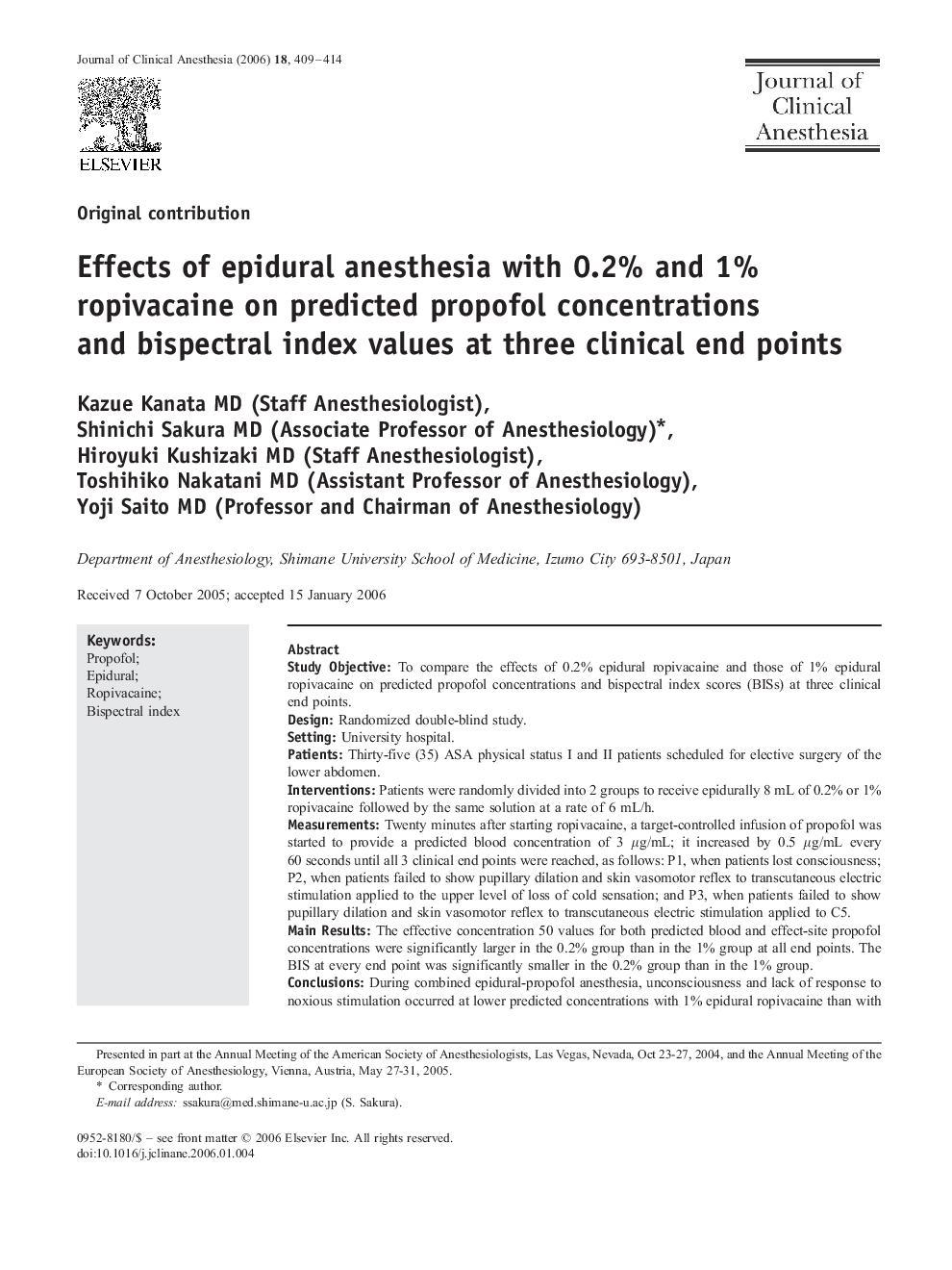| Article ID | Journal | Published Year | Pages | File Type |
|---|---|---|---|---|
| 2763816 | Journal of Clinical Anesthesia | 2006 | 6 Pages |
Study ObjectiveTo compare the effects of 0.2% epidural ropivacaine and those of 1% epidural ropivacaine on predicted propofol concentrations and bispectral index scores (BISs) at three clinical end points.DesignRandomized double-blind study.SettingUniversity hospital.PatientsThirty-five (35) ASA physical status I and II patients scheduled for elective surgery of the lower abdomen.InterventionsPatients were randomly divided into 2 groups to receive epidurally 8 mL of 0.2% or 1% ropivacaine followed by the same solution at a rate of 6 mL/h.MeasurementsTwenty minutes after starting ropivacaine, a target-controlled infusion of propofol was started to provide a predicted blood concentration of 3 μg/mL; it increased by 0.5 μg/mL every 60 seconds until all 3 clinical end points were reached, as follows: P1, when patients lost consciousness; P2, when patients failed to show pupillary dilation and skin vasomotor reflex to transcutaneous electric stimulation applied to the upper level of loss of cold sensation; and P3, when patients failed to show pupillary dilation and skin vasomotor reflex to transcutaneous electric stimulation applied to C5.Main ResultsThe effective concentration 50 values for both predicted blood and effect-site propofol concentrations were significantly larger in the 0.2% group than in the 1% group at all end points. The BIS at every end point was significantly smaller in the 0.2% group than in the 1% group.ConclusionsDuring combined epidural-propofol anesthesia, unconsciousness and lack of response to noxious stimulation occurred at lower predicted concentrations with 1% epidural ropivacaine than with 0.2% epidural ropivacaine. The results also suggest that the BIS may not be a good indicator when propofol anesthesia is combined with epidural anesthesia.
